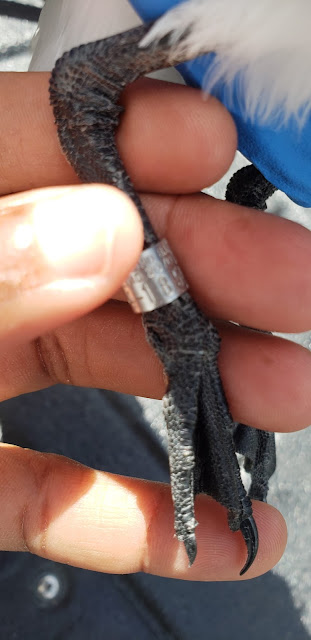 |
| Banded Royal Terns at Oistins |
 |
| Banded Royal tern #0884-18508 |
Birds of Barbados is a social media initiative that aims to raise awareness and educate people about the beautiful birds of Barbados, both native and migratory, where and how to see them, the challenges they face, and the efforts to protect them.
 |
| Banded Royal Terns at Oistins |
 |
| Banded Royal tern #0884-18508 |
Last Saturday's morning downpour brought the first significant fall migration "flight". At 8:16am, I got the first clue that something magical was taking place when I got a Whatsapp message from a friend at a private sanctuary in the north of the
Over 1000 Lesser Yellowlegs, like this one, passed through and over our island
 |
| Lesser Yellowlegs at a private sanctuary in the north |
Yes, it was unusual. Not that Lesser Yellowlegs were migrating because as I learned from a discussion on The Birds of Barbados Facebook page, a flight was expected. What was surprising, was the number of birds, it was as if it was
Sadly, with the shorebird hunting season starting just the day prior, Friday 15th, ... a violent but invisible blow blasted many of these weary travelers from the grey mournful skies.
It was reported that there was a significant lull from about 9am to just after midday and then flocks of Lesser Yellowlegs started to be seen again.
At the end of the day, both sanctuaries at opposite ends of the island saw significant numbers of lesser Yellowlegs. The easterly one gave a conservative estimate of over 400 birds passing through or over that location. As if not to be outdone, the northerners tallied over 500 yellowlegs, but the exclamation of their day came late in the afternoon when there recorded a rare bird, a Tricolored heron (Egretta tricolor) in breeding plumage. 
Tricolored heron (Egretta tricolor) in breeding plumage
While all of this action was taking place I was at home. I saw zero birds on that day as I was relegated to armchair birding, but from all accounts, Saturday's migration was unprecedented as no one, that is, persons with a combined experience of well over 100 years of observing birds, can remember ever experiencing anything like this so early in the fall migration season. It was a spectacle, it was as if it was raining birds.
Stay Safe and enjoy your birding
 |
| Glossy Ibis |
 |
| 90. Black-necked Stilt |
 |
| 91. Collared Plover |
See the total list below of the birds I saw.